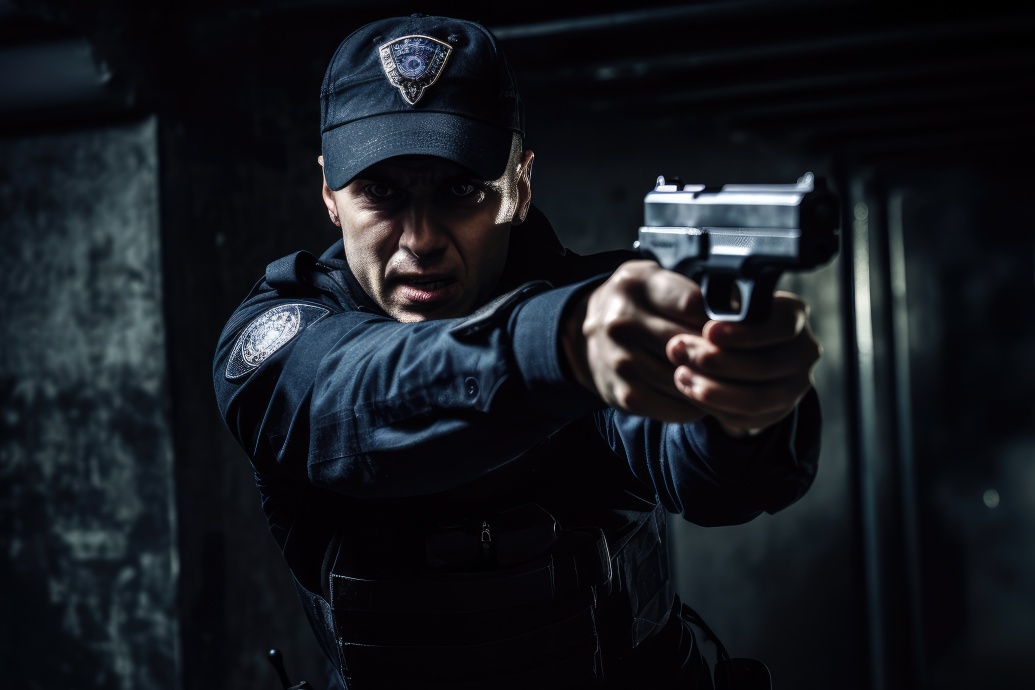One Taser, One Gun, and the Dangerous Myth of Comparing Police Use-of-Force
One Taser, One Gun, and the Dangerous Myth of Comparing Police Use-of-Force
Another high-profile incident in downtown Cincinnati has reignited public debate over use-of-force tactics—this time, after an officer used a Taser to subdue a fleeing suspect during a foot chase at Fountain Square.
The suspect, identified as Jabari Johnson, was later found to have been armed with a loaded handgun. However, according to the Cincinnati Fraternal Order of Police Queen City Lodge 69, the officer who deployed the Taser did not see the firearm during the incident.
FOP President Ken Kober explained that Johnson was partially concealed behind a bench and trees as officers approached, and the weapon was not visible until moments after the initial encounter. The Taser was deployed approximately one second after officers confronted him—based solely on what they perceived in real time.
Still, the outcome was favorable—no one was injured.
This isn’t about defending or condemning specific officers—it’s about understanding the complexity behind their split-second decisions and the danger of oversimplified comparisons.
The comparisons largely stem from the recent shooting of Ryan Hinton, an 18-year-old who was fatally shot by police earlier this month during a confrontation involving a suspected stolen vehicle. In that case, officers perceived an imminent threat after Hinton fled from officers with a handgun that had an extended magazine. Officers used deadly force in that incident. Some have questioned why a Taser wasn't used there—fueling debate after the Fountain Square incident.
“Why didn’t the officers in the Hinton case do the same?”
“This proves they can use a Taser instead of a gun.”
“If one officer can do it, they all should.”
But let’s pause.
That’s like watching a batter strike out and saying,
“Why didn’t he just wait for a better pitch like the last guy?”
Because no two pitches are the same. The speed, the spin, the placement—it all changes. And the batter has milliseconds to decide whether to swing.
Just like officers in the field—no two calls, threats, or encounters are ever exactly alike.
So, comparing one officer’s split-second decision to another’s in a totally different moment?
That’s not analysis. That’s oversimplification.
And even when the outcome is favorable—like it was here—that doesn't automatically make the decision "right" or replicable. It makes it contextual.
In fact, the FOP made it clear: the officer acted without knowledge of the firearm—because he couldn’t see it. His decision to deploy a Taser was based on limited visibility, rapidly unfolding circumstances, and what he reasonably perceived at that exact moment.
Again: perception drives response—not perfect hindsight.
The Myth of a Single Right Way
In real life, officers don’t get slow-motion replays or pause buttons. They get chaos, noise, and a split second to decide.
We can’t judge their reactions like a YouTube tutorial. That’s like expecting a quarterback to find the perfect receiver after you’ve paused the game, zoomed out, and circled all the open options.
In real-time, there’s adrenaline. Tunnel vision. Stress. Imperfect information.
And even with the best training, human beings don’t all react the same under pressure.
Officers don’t react based on what the world later finds out—they react based on what they see, hear, and perceive in a moment of uncertainty.
Good Outcomes ≠ Good Decisions (and Vice Versa)
In this case, the Taser worked. That doesn’t mean it was the best—or safest—option. It means it worked. But if the probes had missed or the suspect fired first, we’d be having a very different conversation.
It’s like driving through a red light and making it safely—you got lucky, not smart. Conversely, someone could follow every traffic law and still get hit by a drunk driver.
Outcome doesn’t always reflect decision quality. In policing, we judge based on what the officer reasonably perceived in that moment, rather than with the benefit of hindsight and perfection.
The “Why Didn’t They Just…” Problem
We love clean comparisons. We like answers like, “Well, this officer used a Taser, so that proves…”
But it’s not Apples to Apples. It’s not even apples to oranges. It’s more like comparing weather reports in two different cities and wondering why one person brought an umbrella and the other didn’t.
No two encounters are identical. No two officers are in the exact same position, with the same angle, information, or perceived threat. To assume otherwise is to oversimplify a dangerously complex job.
The Reliability of Tasers
While Tasers are often presented as a non-lethal alternative to firearms, their effectiveness is not guaranteed. An investigation by APM Reports found that in some major U.S. cities, officers rated Tasers as unreliable up to 40% of the time. In 258 fatal police shootings over three years, a Taser had been attempted first—but failed to subdue the subject.
In short: they don’t always work. And when lives are on the line, “it usually works” isn’t always good enough.
Final Thought
Officers must be held accountable, yes. We must continue to evolve our training, tactics, and oversight. But we also need to stop pretending these split-second situations have tidy answers—especially when we’re viewing them in hindsight from the safety of a couch.
One officer using a Taser doesn’t mean that was the “right” option—just the one that worked in that moment.
Another officer using deadly force doesn’t make it “wrong”—it might have been the only viable option in their moment.
Let’s stop asking, “Why didn’t they just…?”
And start asking, “What did they reasonably perceive in that moment—and what can we learn going forward?”
That’s how we move the conversation beyond hindsight blame—and toward real understanding of what officers actually face when the stakes couldn’t be higher.


